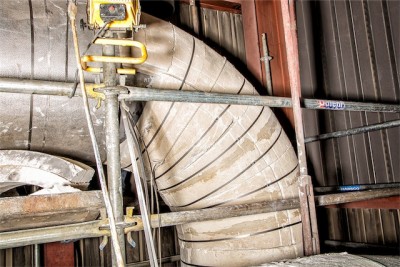Heat is the symbolic graveyard for all useful energy, and has the power to sound the death knell for an industrial process. In a perfect world, all high-temperature industrial processes would be free of variations in energy flow with zero heat losses and 100% process yields.
But in the real world we contend with variations in source energy, heat losses through pipe, duct, pressure-vessel and equipment walls in response to variations in temperature due to the weather or other extraneous conditions. When additional factors such as maintenance and downtime become part of the equation, stabilizing and controlling that same process can become a daunting task.
As we try to create stable operating conditions for a specific process, we look to reduce, if not eliminate, process variation by stabilizing inputs. One method is to use a properly-designed insulation system, which can potentially provide the following benefits:
- Improved cash flow due to reduced energy usage. The gains in process efficiency derived from properly-insulated systems can be as much as 95% — or more — compared with non-insulated systems.
- Potentially higher process yields while consuming the same amount of energy — thus lowering production costs.
- Reduced reliance on energy with a high marginal cost and reduced sensitivity to environmental changes, e.g. weather, facility conditions, downtime, or localized process conditions.
- Lower insulation surface temperatures, which provide safer, more comfortable work environments.
- Faster process startups because less energy is needed to heat up the system. This is especially useful in situations where there are frequent or regular shutdowns.
- An improved margin of safety for personnel involved with the process.

When designing insulation systems, several factors must be considered to ensure peak process performance and longevity for the insulation used. Ambient conditions and the expected temperatures of the process must be known to determine heat flow so that the thickness of the proposed insulation can be determined. The environment that the insulation will be exposed to must also be considered to determine the insulation material and whether it should be jacketed.
Other process requirements that should be baked into the decision process:
- Will it be constant or cyclic?
- Below grade or above?
- Will there be vibration risk from proximity to motors or high pressure steam pipes?
- Will there be a potential safety risk from fire or excessive heat?
In the end, the process itself will dictate what insulation material is called for and what thicknesses are required. The expected annual hours of operation and the relative efficiency of the energy source will also impact the cost / benefit equation in choosing the right insulation.
Each process is different and may have to be adapted for a wide range of climates. Systems that work in one climate may cause problems in others. Thus, careful planning will avoid endangerment of the process from the enemy of efficiency: deadly heat.
